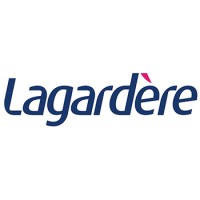
China Central Television Company Cyber Security Posture
cctv.comChina Central Television (formerly Beijing Television), commonly abbreviated as CCTV, is the predominant state television broadcaster in the People's Republic of China. CCTV has a network of 50 channels broadcasting different programmes and is accessible to more than one billion viewers.As of present, there are 50 television channels, and the broadcaster provides programming in six different languages. Most of its programes are a mixture of news, documentary, social education, comedy, entertainment, and drama, the majority of which consists of Chinese soap operas and entertainment. CCTV is one of the official mouthpieces of the Communist Party of China, and is part of what is known in China as the "central three" (中央三台), with the others being China National Radio and China Radio International.
CCT Company Details
china-central-television
10,001+ employees
1592
515
Broadcast Media Production and Distribution
cctv.com
Scan still pending
CHI_7658480
In-progress
Between 900 and 1000
This score is AI-generated and less favored by cyber insurers, who prefer the TPRM score.
 CCT Global Score
CCT Global Score.png)

China Central Television Company Scoring based on AI Models
| Model Name | Date | Description | Current Score Difference | Score |
|---|---|---|---|---|
| AVERAGE-Industry | 03-12-2025 | This score represents the average cybersecurity rating of companies already scanned within the same industry. It provides a benchmark to compare an individual company's security posture against its industry peers. | N/A | Between 900 and 1000 |
China Central Television Company Cyber Security News & History
| Entity | Type | Severity | Impact | Seen | Url ID | Details | View |
|---|
China Central Television Company Subsidiaries

China Central Television (formerly Beijing Television), commonly abbreviated as CCTV, is the predominant state television broadcaster in the People's Republic of China. CCTV has a network of 50 channels broadcasting different programmes and is accessible to more than one billion viewers.As of present, there are 50 television channels, and the broadcaster provides programming in six different languages. Most of its programes are a mixture of news, documentary, social education, comedy, entertainment, and drama, the majority of which consists of Chinese soap operas and entertainment. CCTV is one of the official mouthpieces of the Communist Party of China, and is part of what is known in China as the "central three" (中央三台), with the others being China National Radio and China Radio International.
Access Data Using Our API

Get company history
.png)
CCT Cyber Security News
20 DPP-linked suspects face arrest warrant for cyberattack
The bureau said ICEFCOM released its latest attack on the tech company on May 20, describing it as a large-scale, coordinated assault with the ...
Over 600 universities introduce cybersecurity-related majors: report
China unveiled on Wednesday a report on the development of talent in the cybersecurity industry for 2024, highlighting the strong demand for ...
China’s Slow March Toward Cyber IDs
The government has announced that netizens will require IDs to go on the internet. For now this is voluntary, but there are signs it will not remain that way ...
Alibaba Cloud to live stream China's Spring Festival television gala globally for first time
Alibaba Cloud, the cloud computing and artificial intelligence (AI) arm of Alibaba Group Holding, is working with Chinese state media to ...
China opens antitrust probe into Nvidia
When it comes to market capitalization, Nvidia is currently the second-biggest public company in the world, behind Apple.
The Complete List of Hacker And Cybersecurity Movies
Gates: The Hippie and The Nerd — This documentary tells the story of two of the biggest men in tech, Bill Gates and Steve Jobs, and the ...
China launches 3-month crackdown on online news providers
The Office of the Central Cyberspace Affairs Commission issued a notice on the special operation to "clear up and rectify" illegal conduct by ...
China Central Television airs crypto segment in rare move
CCTV is China's largest state broadcaster, with various programs catering to an audience of over 1 billion people. Interestingly, nothing ...
Apple Opening Data Center in China to Comply With Cybersecurity Law (Published 2017)
Apple said Wednesday that it would open its first data center in China, joining a parade of technology companies responding to growing global demands.

CCT Similar Companies

BBC
The BBC is the world’s leading public service broadcaster. We’re impartial and independent, and every day we create distinctive, world-class programmes and content which inform, educate and entertain millions of people in the UK and around the world. We do this across: - A portfolio of television

Sky
Sky is one of Europe’s leading media and entertainment companies and is part of Comcast Corporation, a global media and technology company that connects people to moments and experiences that matter. At Sky, we Believe in Better. It’s in our DNA. We’re famous for innovation. We offer the world’s sm

CBC/Radio-Canada
CBC/Radio-Canada is Canada's national public broadcaster and a strong advocate of Canadian culture. We offer a unique space and a fresh Canadian perspective with unmatched cultural, musical and documentary programming. We do it in French, English and eight Aboriginal languages. Our activities prom

Lagardere
Created in 1992, Lagardère is an international group with operations in more than 40 countries worldwide. It employs around 31,300 people and generated revenue of €8,081 million in 2023. The Group is structured around two priority divisions: - Lagardère Publishing is the world’s third-larges

DStv Media Sales
DStv Media Sales are an award-winning and globally recognised media sales company with over 20 years of experience. We have the expertise and innovation to provide your brand with dynamic advertising and communication solutions that rival the best in Africa. We pride ourselves in creating trusted p

ESPN
ESPN is the leading multiplatform sports entertainment brand that features seven U.S. television networks, the leading sports app, direct-to-consumer ESPN+, leading social and digital platforms, ESPN.com, ESPN Audio, endeavors on every continent around the world, and more. ESPN is 80 percent owned b

Frequently Asked Questions
Explore insights on cybersecurity incidents, risk posture, and Rankiteo's assessments.
CCT CyberSecurity History Information
How many cyber incidents has CCT faced?
Total Incidents: According to Rankiteo, CCT has faced 0 incidents in the past.
What types of cybersecurity incidents have occurred at CCT?
Incident Types: The types of cybersecurity incidents that have occurred include .
Incident Details
What are the most common types of attacks the company has faced?
Additional Questions
What Do We Measure?
















Every week, Rankiteo analyzes billions of signals to give organizations a sharper, faster view of emerging risks. With deeper, more actionable intelligence at their fingertips, security teams can outpace threat actors, respond instantly to Zero-Day attacks, and dramatically shrink their risk exposure window.
These are some of the factors we use to calculate the overall score:
Identify exposed access points, detect misconfigured SSL certificates, and uncover vulnerabilities across the network infrastructure.
Gain visibility into the software components used within an organization to detect vulnerabilities, manage risk, and ensure supply chain security.
Monitor and manage all IT assets and their configurations to ensure accurate, real-time visibility across the company's technology environment.
Leverage real-time insights on active threats, malware campaigns, and emerging vulnerabilities to proactively defend against evolving cyberattacks.




